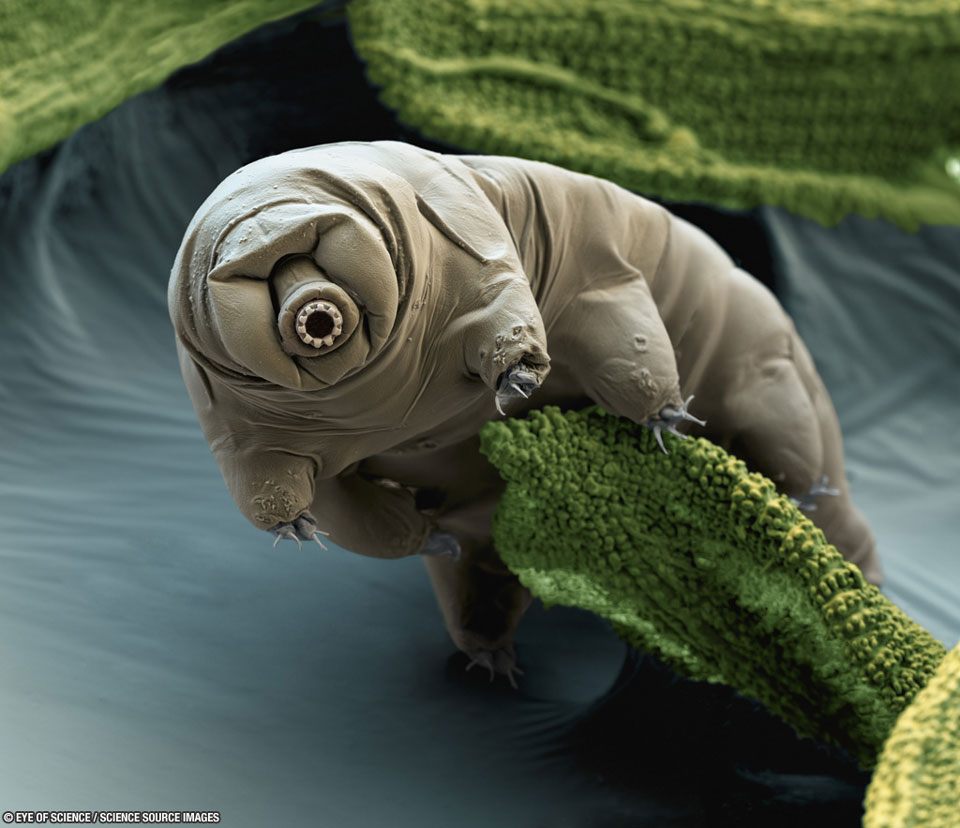more »
Is this an alien? Probably not, but of all the animals on Earth, the
tardigrade might be the best candidate. That's because
tardigrades are known to be able to go for decades without food or water, to survive temperatures from near
absolute zero to well above the boiling point of water, to survive pressures from near zero to well above that on
ocean floors, and to survive direct exposure to dangerous
radiations. The far-ranging survivability of these
extremophiles was
tested in 2011
outside an orbiting space shuttle.
Tardigrades are so durable partly because they can repair their own
DNA and reduce their body water content to a few percent. Some of these
miniature water-bears almost
became extraterrestrials recently when they were launched toward to the Martian moon
Phobos on board the Russian mission
Fobos-Grunt, but stayed terrestrial when a rocket failed and the capsule remained in Earth orbit.
Tardigrades are more common than humans across most of the Earth.
Pictured here in a color-enhanced
electron micrograph, a millimeter-long tardigrade crawls on
moss.
Zazzle Space Gifts for young and old
